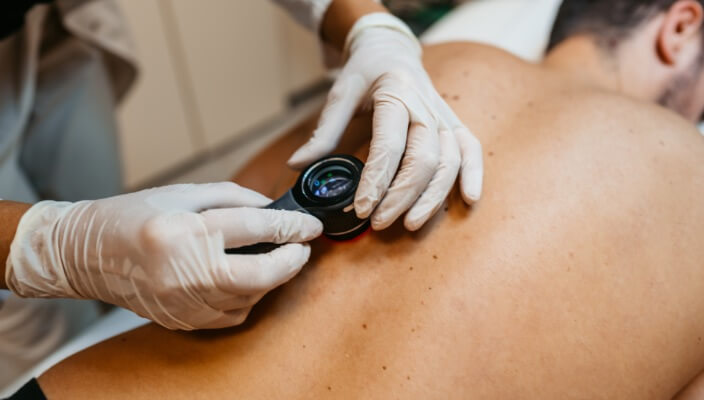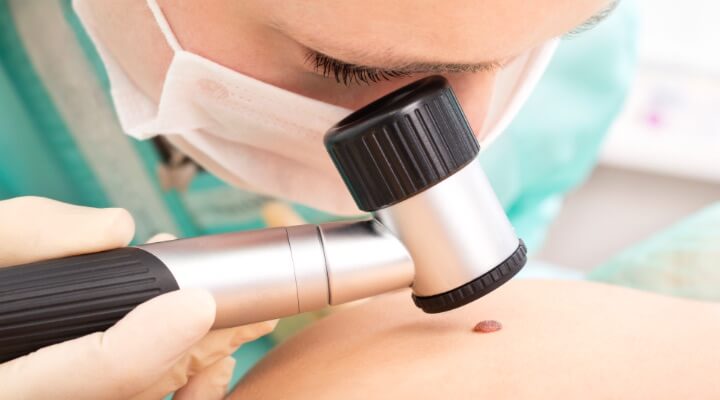Understanding Melanoma: Signs, Risk Factors, and Prevention Tips
What Are the Signs of Melanoma?
 Skin cancer, particularly melanoma, is a concerning health issue affecting millions globally.
Skin cancer, particularly melanoma, is a concerning health issue affecting millions globally. Understanding melanoma is akin to deciphering a crucial chapter in our skin's story—a chapter where awareness and vigilance play pivotal roles. Melanoma often starts with subtle changes, imperceptible to the untrained eye. However, these whispers of transformation, when acknowledged and acted upon promptly, can alter the entire narrative.
Understanding its signs, risk factors, and prevention methods is crucial for safeguarding your skin health. Learn more about how to spot melanoma and what you can do to keep your skin healthy below.
Did You Know? Melanoma Statistics
Melanoma is considered one of the most aggressive forms of skin cancer, and its incidence rates have been increasing over the past few decades. It was estimated that in the United States alone, there was 106,110 new cases of melanoma diagnosed in 2021, leading to about 7,180 deaths.
With early detection and appropriate treatment, the chances of successful outcomes and survival significantly improve.
The ABCDEs of Melanoma: Assess, Border, Color, Diameter, Evolving - Check for Changes! This phrase encapsulates the key elements of the ABCDE rule for identifying potential signs of melanoma.
Understanding the ABCDEs of Melanoma
- Asymmetry: Check if one half of a mole or birthmark doesn't match the other half.
- Border: Look for irregular, scalloped, or poorly defined edges.
- Color: Note any non-uniform coloration—various shades of brown, black, or even pink, red, or white.
- Diameter: Pay attention if a mole exceeds the size of a pencil eraser (approximately 6mm), although some melanomas can be smaller.
- Evolving: Monitor changes in size, shape, color, or elevation over time.
What Are the Risk Factors for Melanoma?
- UV Exposure: Prolonged exposure to sunlight or artificial UV radiation like tanning beds.
- Fair Skin: Individuals with fair skin, light hair, and blue or green eyes are more vulnerable.
- Family History: Having a relative diagnosed with melanoma heightens the risk.
- Moles: Numerous moles or atypical moles can elevate the risk of developing melanoma.
- Weakened Immune System: Individuals with compromised immunity face a higher risk.
How Can Melanoma be Prevented?
- Sun Protection: Use sunscreen (SPF 30+) and wear protective clothing; seek shade, especially during peak sunlight hours.
- Avoid Tanning Beds: Limit exposure to artificial UV radiation.
- Regular Skin Checks: Perform monthly self-examinations and consult a dermatologist annually for a professional skin exam.
- Healthy Lifestyle: Maintain a balanced diet, stay hydrated, and avoid smoking to support overall skin health.
Melanoma FAQs from Pinnacle Dermatology
Melanoma: Partnering with Your Dermatologist
Your skin's health is an ongoing dialogue that you actively shape. Regular skin checks and adherence to sun-safe practices contribute significantly to crafting a vibrant, healthy life story. These efforts empower you to prioritize awareness and proactive care, effectively reducing potential health challenges such as melanoma.
However, while self-monitoring is essential, the guidance of a dermatologist is irreplaceable. These specialists possess the expertise to interpret the intricate nuances of your skin's story. Seeking their professional insight ensures a comprehensive understanding of any changes, elevating the level of care and precision in early detection.
By remaining vigilant and responsive to your skin's signals and promptly consulting a dermatologist when necessary, you actively contribute to a narrative where your skin's health thrives. Their trained eye and diagnostic tools swiftly identify concerning changes, ensuring that chapters related to melanoma remain brief interludes in your skin's journey.
Diligence, care, and empowerment should resonate throughout your skin's story. Being an attentive guardian means not only self-monitoring but also partnering with a dermatologist. Their guidance reinforces your commitment to skin health and overall well-being.
Remember, you're the primary author of your skin's ongoing story. Today's attentiveness and proactive measures, coupled with the expertise of a dermatologist, guarantee chapters filled with resilience, health, and triumph over melanoma. The collaboration between your self-awareness and their specialized knowledge forms the crux of a vigilant and proactive approach to skin health.
Featured Products for Sun Protection

EltaMD UV Physical SPF 41
For oil-free sun protection with just a touch of color, EltaMD's lightly tinted UV Physical is a healthy choice. This chemical-free mineral sunscreen has antioxidants to neutralize free radicals. Water-resistant UV Physical withstands water, humidity and perspiration. 3 oz

EltaMD UV Pure SPF 47
For those who want chemical-free active ingredients, EltaMD UV Pure is the ideal daily sunscreen. Great for children and adults, the gentle formula glides on wet or dry skin and rubs in quickly. UV Pure is formulated with purely physical active ingredients which are photostable. 4 oz / 114 g



